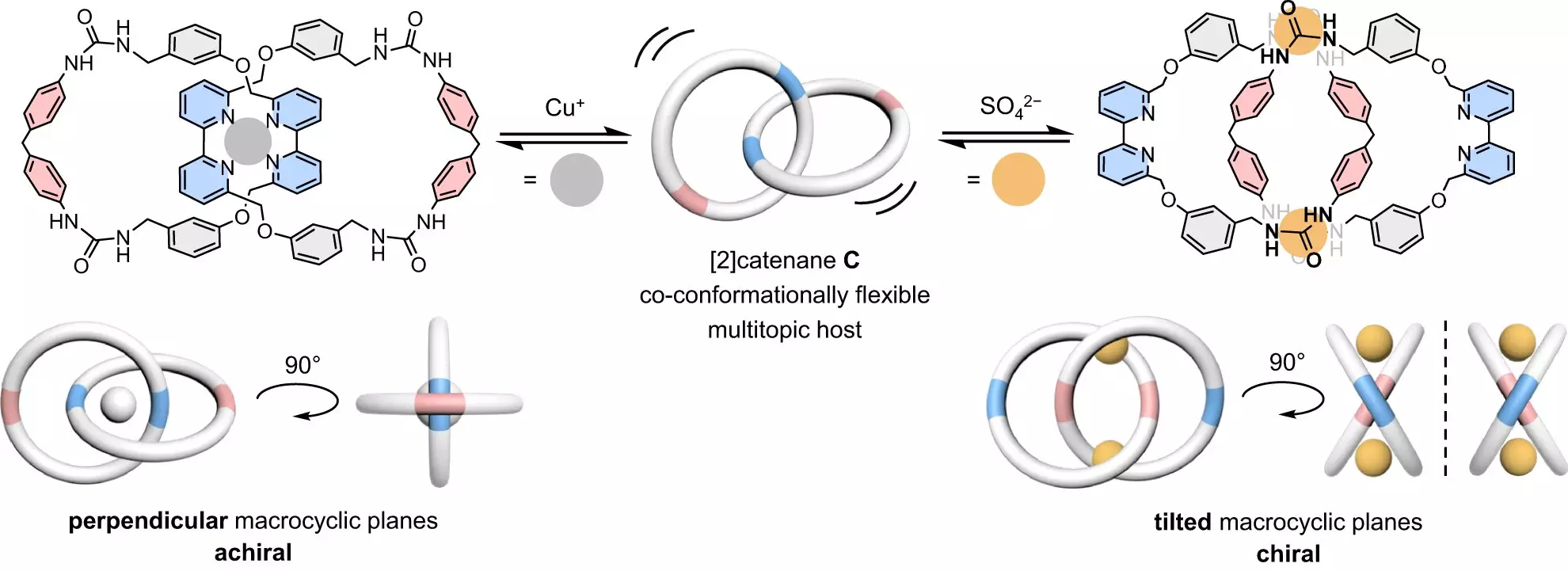At first glance, common items like metal chains and handcuffs might seem worlds apart from high-level scientific research. However, these artifacts possess fascinating characteristics—sturdy and inflexible on their own but incredibly resilient when interlinked. This interplay of rigidity and suppleness serves as an insightful analogy for the burgeoning world of catenanes, the molecular counterparts of these everyday structures. Catenanes are built from interlocked rings at the nano scale and exhibit properties that make them indispensable for innovative applications, particularly in the fields of molecular switches and machines. Despite their potential, the complex synthesis involved in creating catenanes has stifled their broader applications until recently.
A Breakthrough in Catenane Synthesis
A pivotal development emerged from research conducted under the stewardship of Professor Ho Yu Au-Yeung at The University of Hong Kong. The research team’s recent endeavor resulted in the creation of a catenane composed of two freely-rotating rigid macrocycles. This unique design enables the catenane to selectively and robustly bind to two distinct entities: a copper(I) cation and a sulfate anion. This is a remarkable feat, as conventional theories pertain to electrostatic interactions, where same charges repel, while opposite charges attract, often hindering simultaneous binding to both cation and anion due to their contrasting geometries and charges.
Engineering Molecular Adaptability
The ingenuity of Professor Au-Yeung’s team lies in the catenane’s engineering. Instead of forcing a single binding site for both entity types, the researchers innovatively incorporated separate cation and anion binding sites onto each of the interlinked rings. This design bestows the catenane with extraordinary flexibility, enabling it to modify its shape dynamically. Imagine the catenane as a molecular chameleon, adept at adjusting its binding sites to fit the contours of either the spherical copper(I) cation or the tetrahedral sulfate anion. Such adaptability not only appears remarkable in a laboratory setting but lays the groundwork for future innovations in fields ranging from environmental science to medical diagnostics.
Applications Ready for Exploration
The implications of this work are groundbreaking. Both copper(I) and sulfate ions are not merely theoretical constructs; they play crucial roles in cellular growth and organism development. Their extraction from environmental samples has significant implications, particularly as rising pollution levels continue to pose serious questions about our ecosystems and health. In medical settings, the ability to measure and detect these ions could elevate the standards of diagnostic procedures, akin to the routine testing of electrolytes like sodium and chloride in blood samples. Moving forward, advancements in technology would benefit immensely from selective ion binding, opening up numerous pathways for both therapeutic interventions and environmental monitoring.
Professor Au-Yeung’s Vision for the Future
Professor Au-Yeung envisions a future characterized by advanced catenane hosts designed to bind multiple cations, anions, and even paired ions simultaneously. This ambitious goal could revolutionize how we approach the identification and extraction of vital minerals—not only enhancing laboratory capabilities but also paving the way for everyday applications. Imagine a world where environmental samples can be profiled for metal content with unprecedented precision, or where diagnostic tests can rapidly discern multiple ion levels in a single stride.
It’s a glorious time for molecular science, where the lessons gleaned from mundane objects are expediting our journey into the vast possibilities offered by nanotechnology. Catenanes are ushering in a paradigm shift, challenging existing scientific norms while inviting us to rethink the mechanisms of molecular recognition and interaction. As we advance toward a more sophisticated understanding of these molecular marvels, the doors to new technologies are left wide open.

